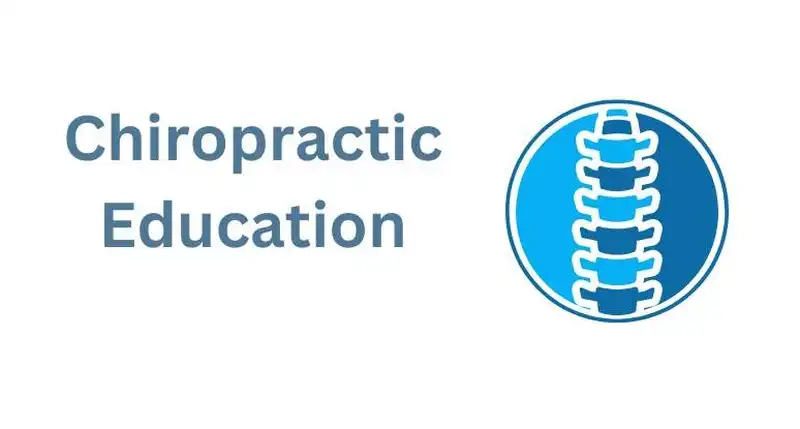Chiropractic education is an essential part of a chiropractor’s career. It ensures they have the knowledge and skills to provide quality patient care. Various chiropractic doctorates are available, each designed to meet the needs of different chiropractor careers. This blog will look at the types of chiropractic doctorates available and discuss the benefits and disadvantages of obtaining one. Finally, it will offer tips on how to find accredited chiropractor schools.
What is chiropractic education?

Chiropractic education is a 10-year degree that will prepare you to be a chiropractor. It can be obtained through traditional classroom learning, distance learning, and web-based courses. Here are some of the benefits of obtaining chiropractic education:
- Chiropractors need critical skills for leadership, communication, and problem-solving. Many believe that chiropractic education provides the foundation necessary for becoming a successful chiropractor. After all, one of the primary goals of chiropractic care is to help restore function and improve health by addressing underlying causes of pain and discomfort. Achieving this goal requires an understanding not only of chiropractic techniques but also the principles upon which those techniques are based – including communication and problem-solving skills!
- Chiroproworkers who have completed an accredited chiropractic program are likely better equipped than their peers when providing quality patient care. Training in advanced diagnostic imaging procedures, therapeutic exercise, nutrition advice, neurological disorders treatment plans, etc., helps them provide patients with comprehensive care programs that address all aspects of their health concerns
- Graduates from accredited chiropractor educational programs possess superior writing abilities relative to non-chiropractor students. According to The Journal of Academic Writing (JAW), “The graduates [of] these [accredited] schools…demonstrate greater sophistication in terms” than undergraduate non-chiropractor students when assessing research papers written
A chiropractor’s education prepares them for a successful career.
A chiropractor’s education prepares them for a successful career in chiropractic. A chiropractor’s education provides the foundation for becoming a chiropractor. A chiropractor’s education prepares you to be an expert on cervical spine care.
Chiropractors are often called upon to treat people with conditions that involve the neck, head, and spinal cord, such as headaches, seizures, TMJ pain, low back pain, and more. The field of chiropractic is constantly growing thanks to advances in technology and research that allows chiropractors to use their skills more effectively. Achieving success in chiropractic requires years of dedicated study that culminates in an accredited degree program from one of the leading schools available today.
Many accredited programs will provide the education and training you need to become a successful chiropractor. Choosing the right school can be difficult, but it’s important to review your options carefully before making a decision. Here are some things you should consider when choosing a school:
The curriculum: Review each program’s curriculum vitae (CV)to see what courses they offer and what kind of preparation students will receive after graduation. This information will help you determine whether this program is right for you.
The faculty: Look for reputable professors who have experience treating specific conditions and regularly publish research papers related to their area of specialization and Accreditation:
The types of chiropractic doctorates available.
When considering chiropractor education, there are different types of chiropractic doctorates.
Choosing the right type of doctorate is important because it will determine the direction your chiropractic career will take. There are four types of chiropractor doctorates: clinical, academic, research-oriented, and professional development (PD).
- Clinical Doctorate: The clinical doctoral degree program prepares graduates for careers as primary care doctors who treat spinal manipulation techniques and other manual therapies, such as back pain and neck pain. Clinical doctoral degrees usually require two years of full-time study after earning a bachelor’s degree in health sciences or another related field.
- Academic Doctorate: The academic doctoral degree program provides specialized training in one or more research areas focused on improving the quality and effectiveness of Chiropractic care. Academic doctoral programs typically require three years of full-time study after earning a bachelor’s degree in health sciences or another related field.
- Research-Oriented Doctorate: A research-oriented doctorate program emphasizes studying Chiropractic science behind closed doors to produce knowledgeable professionals who can develop new methods for treating patients. Research-oriented doctoral programs often involve participating in qualifying residency programs, which may last anywhere from six months to two years.
- Professional Development Doctorate: The PD doctorATE allows individuals to combine their love for helping people with their passion for learning. This type of doctor
benefits of obtaining a chiropractor’s education
Chiropractic education has multiple benefits that can help you be a successful chiropractor.
- A chiropractor’s education will give you the skills and knowledge needed to be a successful chiropractor. Chiropractors need to understand anatomy and physiology to treat patients effectively, so obtaining a degree in chiropractic is essential. Your educational background will also give you the know-how needed for proper diagnosis and treatment.
- A chiropractor’s education will equip you with the tools to diagnose and treat patients effectively. Chiropractors must possess excellent clinical diagnostic skills and knowledge of how spinal injuries cause discomfort and pain throughout the body. This training helps practitioners identify which problems require further evaluation or manipulation by adjusting specific spine areas.
- A chiropractor’s education will give you the knowledge and understanding of anatomy and physiology necessary for effective treatment.”Chiropractic school teaches students about neurology, orthopedics, biomechanics, biochemistry/nutritional sciences, physical medicine & rehabilitation (PM&R), clinical epidemiology/statistics*, and pharmacology.
How to find accredited chiropractic schools
Accredited chiropractic schools offer a variety of courses that can help you become a successful chiropractor.
Chiropractic schools have different curriculum requirements, so research which courses will work best.
There is no right way to become a chiropractor, so find the school that fits your unique needs and interests. You should also consider faculty members’ experience and training in orthopedics and neurology and their years of clinical practice experience. Finally, look for accredited programs with an excellent reputation for providing quality education.
The disadvantage of obtaining a chiropractor’s education
The chiropractor’s education might not be relevant to your area of practice. For example, many chiropractors have degrees in physical therapy, but this is only sometimes the case.
The chiropractor’s education might not prepare you adequately for the demands of being a chiropractor. Many chiropractors receive a large amount of training specific to their field, but they may need more skills or knowledge to practice successfully as a chiropractor. Most colleges and universities’ curricula need to include more content about Chiropractic Techniques. There are very few accredited programs that teach Chiropractic techniques. As a result, aspiring chiros must take extensive anatomy, biomechanics, neurology, and kinesiology courses.
The chiropractor’s education might teach you about something other than safe and effective techniques. Many chiropractors learn how to manipulate vertebrae using force instead of understanding conservative methods such as traction and manipulation. This can lead to increased pain rather than relief from back pain or other musculoskeletal conditions.
Obtaining a chiropractor’s degree also comes with an expensive price tag: tuition costs alone can range from $15,000-$35,000 per year in +living expenses.
Conclusion
Chiropractic education is a vital part of achieving success as a chiropractor. Accredited chiropractic schools teach you the skills and knowledge necessary to succeed in your field and provide the tools you need to help patients reach their health goals. While there are some disadvantages to obtaining a chiropractor’s education, these risks are easily outweighed by the benefits obtained as a result of completing this program. So if you’re interested in becoming a chiropractor, learn what is required for admission into an accredited school today.



